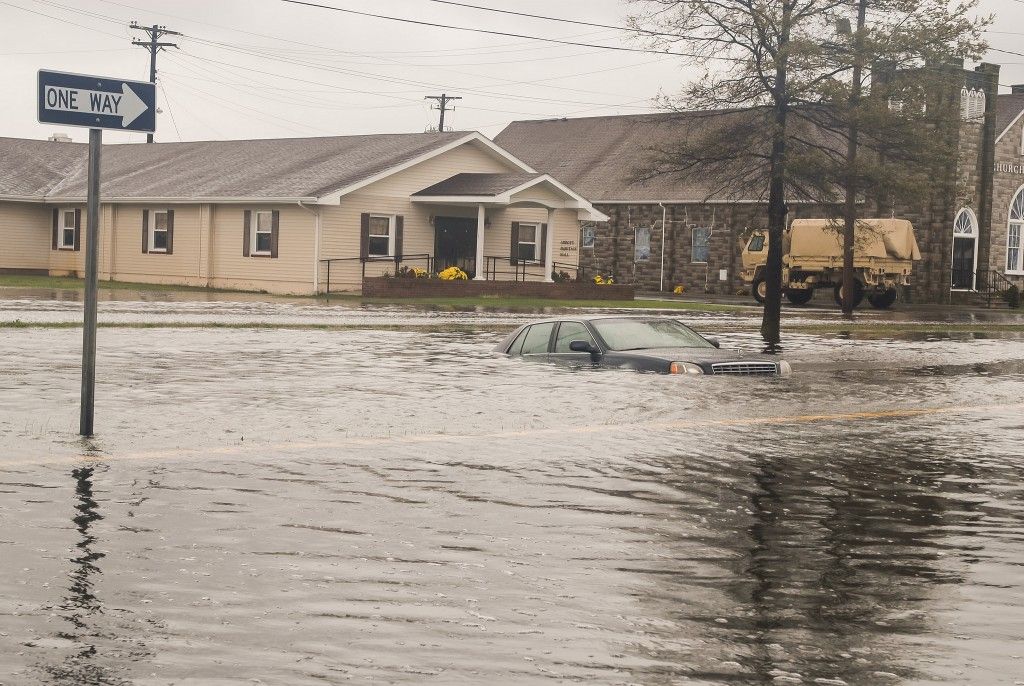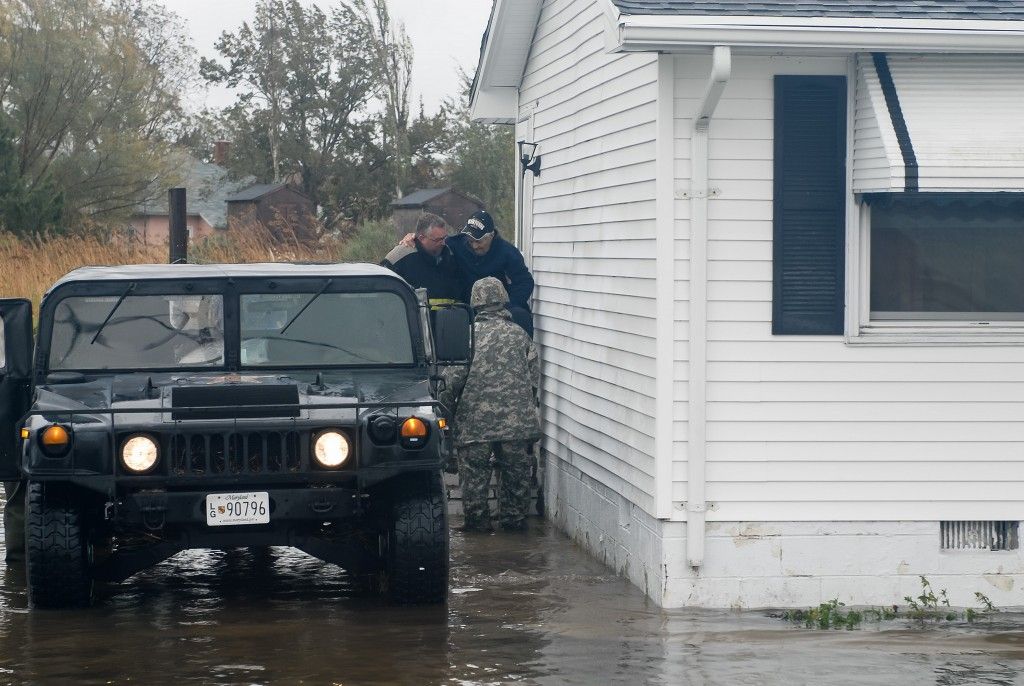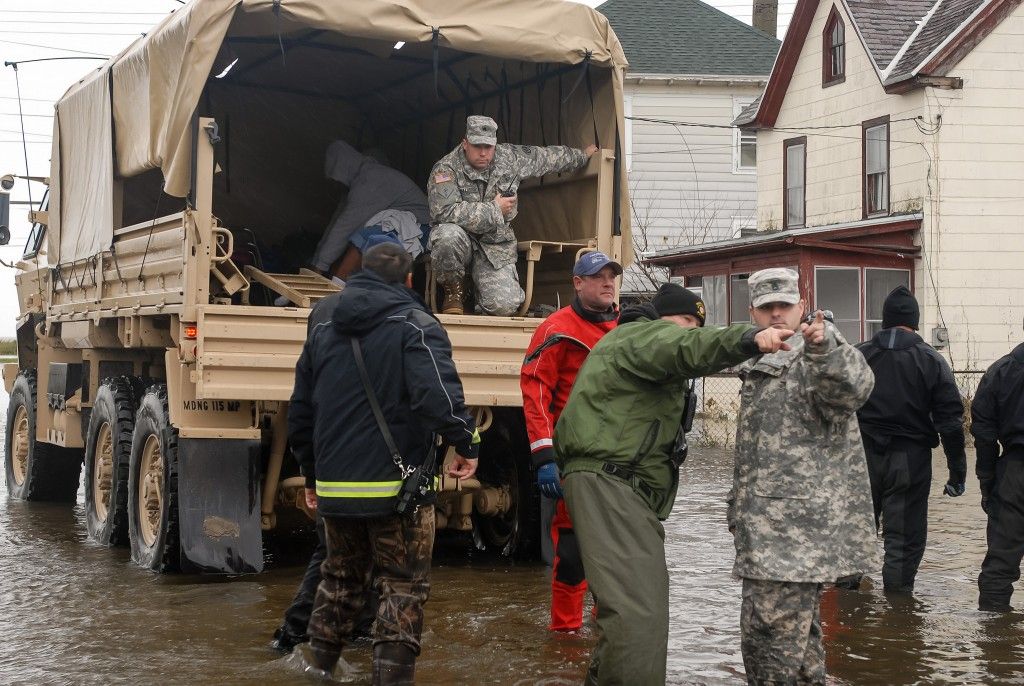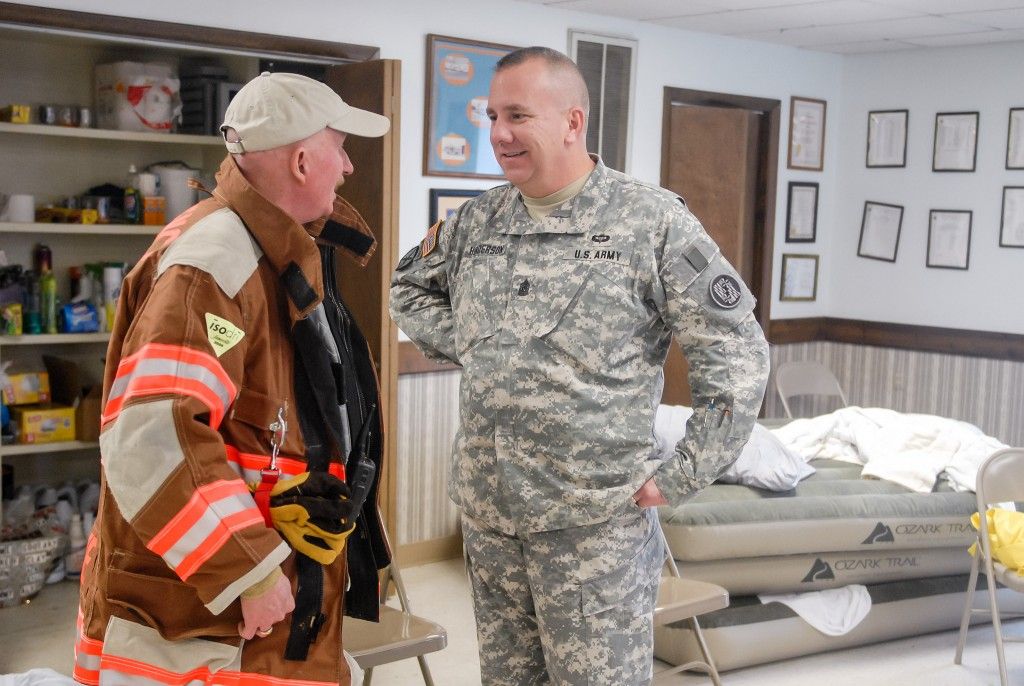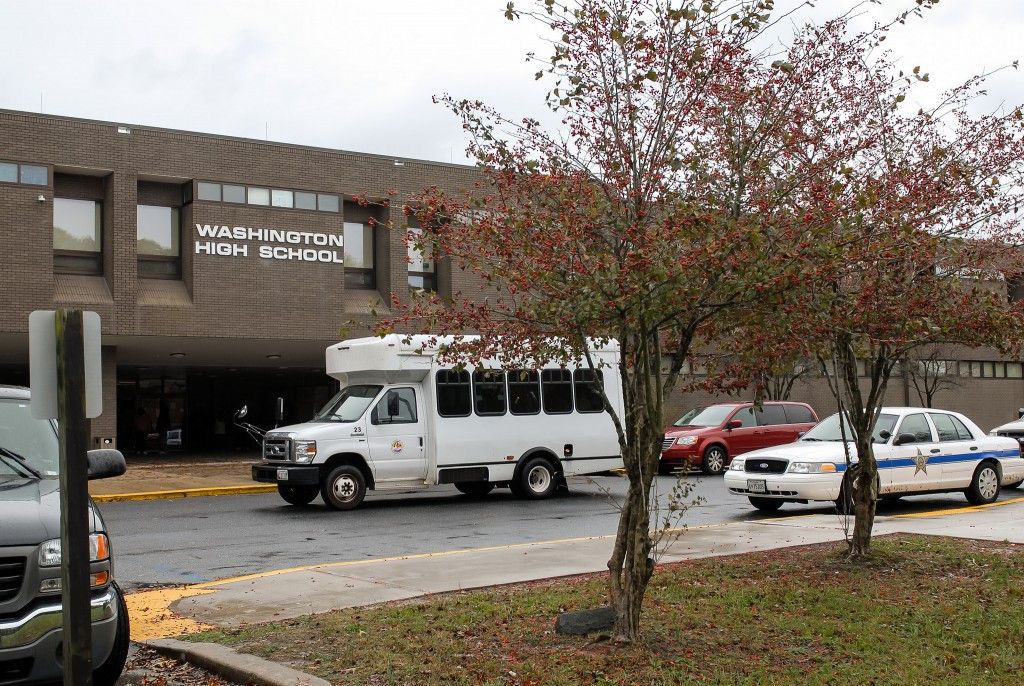Members from several Maryland Guard units are deployed to Crisfield Md., to assist local authorities with house-to-house evacuations on Oct. 30, 2012. The Servicemembers have been stationed in the area since Sunday performing 24-hour operations.
Servicemembers helped first responders evacuate senior citizens, families and children to the Elk Lodge, a temporary staging area for residents. Residents were then transported to the designated shelter at Washington High School.
The Maryland Guard sent High Mobility Multipurpose Wheeled Vehicles and Light Medium Tactical Vehicles as well as support vehicles to assist the first responders. The LMTV has a 2.5-ton capacity and is rapidly deployable worldwide. It operates on primary and secondary roads, trails and cross-country terrain, in all climatic conditions.
Soldiers sit to eat lunch after many hours of helping Marylanders during Hurricane Sandy. Many different kinds of food were available from Meals, Ready-to-Eat to pizzas.
Command Sgt. Maj. Aaron Henderson, Joint Task Force and 58th Battlefield Surveillance Brigade command sergeant major, speaks with Steve Marshall, director of emergency services Somerset County, in the Emergency Operations Center. The different agencies collaborated resources, staged vehicles and even slept at the EOC.
Although water levels receded, some areas were still flooded with almost three feet of water. LMTVs were used to transport citizens to the drier areas. Crisfield, in Somerset County, is located on the Chesapeake Bay and is less then 30 miles from the Atlantic Ocean.
“The presence of the Guard has an impact on the psychology of people,” said Red Cross Volunteer Rafael Correa, a Salisbury resident and Vietnam War Veteran. “Seeing that uniform is a comfort.”
During the height of the evacuations, Monday afternoon, the Washington High School housed more than 300 affected residents per day. The school was designated as a shelter on Sunday. After busloads of residents were dropped off they filled out basic info for accountability, were given cots and blankets to sleep, hot meals, and some medical help if needed. The school’s doors were open to not only the human residents but pets as well.


